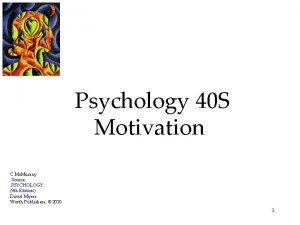to each according to his or her needs








- Slides: 8

…to each according to his (or her) needs: Where are the Poor in Innovation Studies? Jo Lorentzen & Rahma Mohamed Science and Innovation Unit HSRC, Cape Town

Outline • Relevance – Why we should be researching innovation in LICs • LICs in the innovation literature – Major recent handbooks – Important journals • Reasons for the blind spot – Good or bad? • Systematic literature review on innovation in LICs 1997 -2008 – Themes, issues, concepts • Next steps and outlook

Relevance The poor in the world • 1 bn people in 49 LICs (< $938 GNI/cap. ) • 4 out of 5 < $1. 25/day. • ~50% world population < $2/day. The world about the poor • STI can transform poor economies and help them join the global knowledge economy.

LICs in the innovation literature • Fagerberg, Mowery, and Nelson, eds. 2005. Oxford Handbook of Innovation. Oxford: OUP. • Lundvall, Joseph, Chaminade, and Vang, eds. 2009. Handbook on Innovation Systems and Developing Countries: Building Domestic Capabilities in a Global Context. Cheltenham: Elgar. • 7% of all conference papers at Globelics 6 th Annual Conference in Mexico 2008 about LICs. Those most in need of our insights are least likely to get them.

Articles published in selected journals by income groups, 1997 -2008 LIC % Lower MIC % Upper MIC % HIC % Total Research Policy 1 . 31 39 11. 93 28 8. 56 259 79. 20 327 Industrial and Corporate Change 1 1. 45 2 2. 90 7 10. 14 59 85. 51 69 R&D Management 1 2. 44 7 17. 07 0 . 00 33 80. 49 41 Journal of Evolutionary Economics 2 4. 76 0 . 00 38 90. 48 42 Technovation 32 8. 65 62 16. 76 34 9. 19 242 65. 41 370 Total 37 4. 36 112 13. 19 69 8. 13 631 74. 32 849

Reasons for the blind spot 1. There is no innovation in LICs (e. g. Lall and Pietrobelli 2002, Viotti 2002). • 2. But: How “new” is “new”? What about non-R&D-based innovation? What about imitation as a learning process? There is innovation but we’re too busy studying the BRICS. • 3. Home country and (inter)national funding bias There is innovation but we don’t understand it (e. g. Hobday 2005). • 4. Are we using inadequate models? There is innovation but we don’t recognise it. • Are there any models?

Results from a literature review (153 relevant articles in ISI, 1997 -2008) Papers by innovation scholars 1. <20% 2. Focus: manufacturing (firms) 3. Themes: firm-level capabilities, role of linkages, modes of learning, impact on performance, system (ex ante) 4. Agreed conceptual framework 5. No conceptual conversation about LICs 6. No attention to major economic activities Papers by “livelihoods” scholars 1. >80% 2. Focus: agriculture and health (communities and individuals) 3. Themes: health system performance, (contextualisation of) technology transfer and dissemination, user-driven innovation, system (ex post) 4. But mostly ad-hoc approach: solution-to-problem (often without theory) 5. Some conversation about livelihoods in LICs 6. No attention to diversification and upgrading

Next steps and outlook From each according to his (or her) ability • Expand journal coverage. Do co-citation analysis. • (An old debate: Zvi Griliches vs Everett Rogers (1960 s)) • Innovation scholars look at the wrong things with the right tools. • Livelihood scholars look at the right things with the wrong tools. • But: both innovation scholars and rural sociologists (i. e. diffusion researchers) are interested in – capabilities (of firms or individuals (Sen!)), including learning – systemic aspects – differential trajectories (success, lock-in, speed etc. ) • Health, livelihoods, and dynamic activities are linked. LICs research must seek cross-fertilisation.















